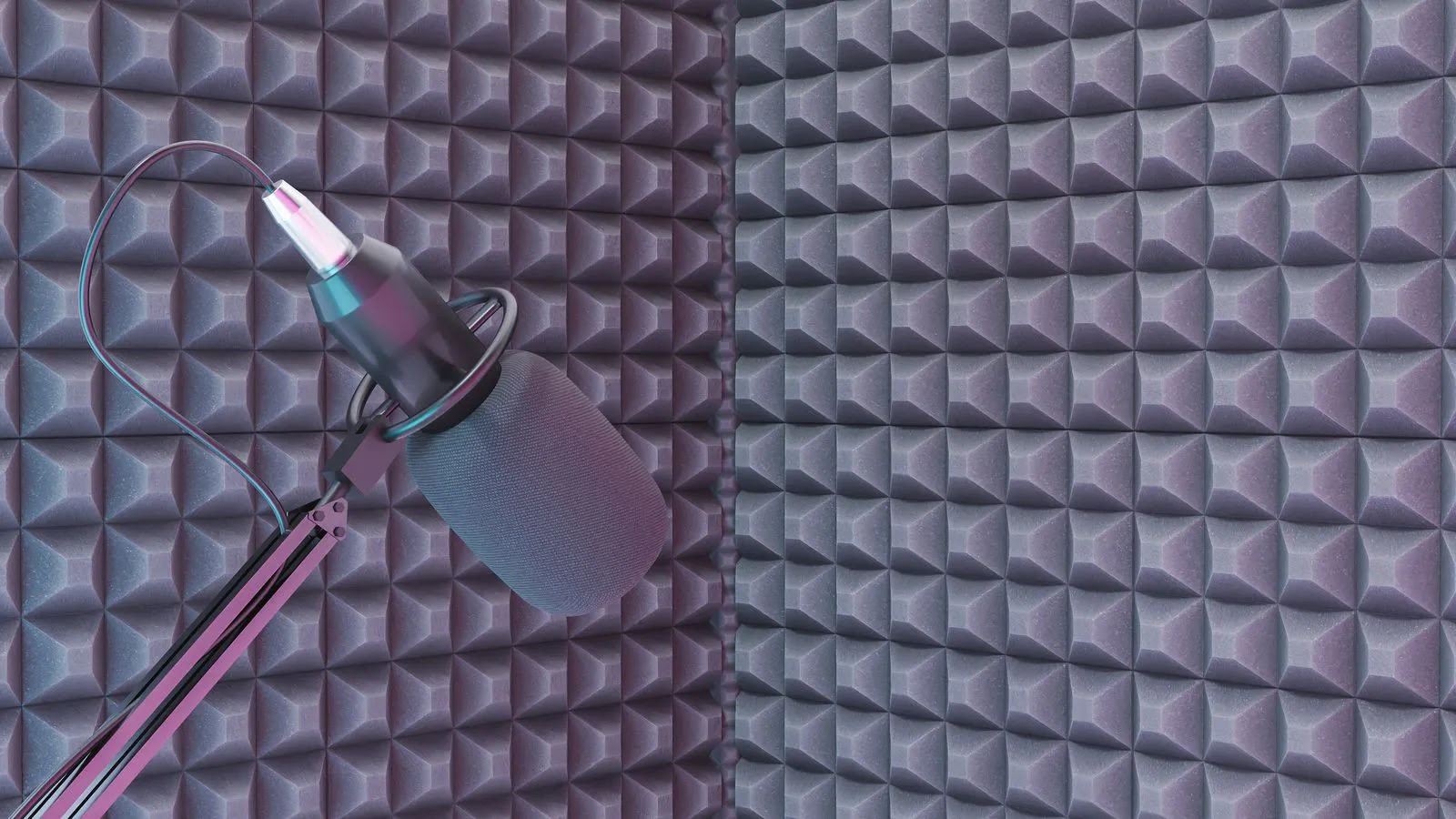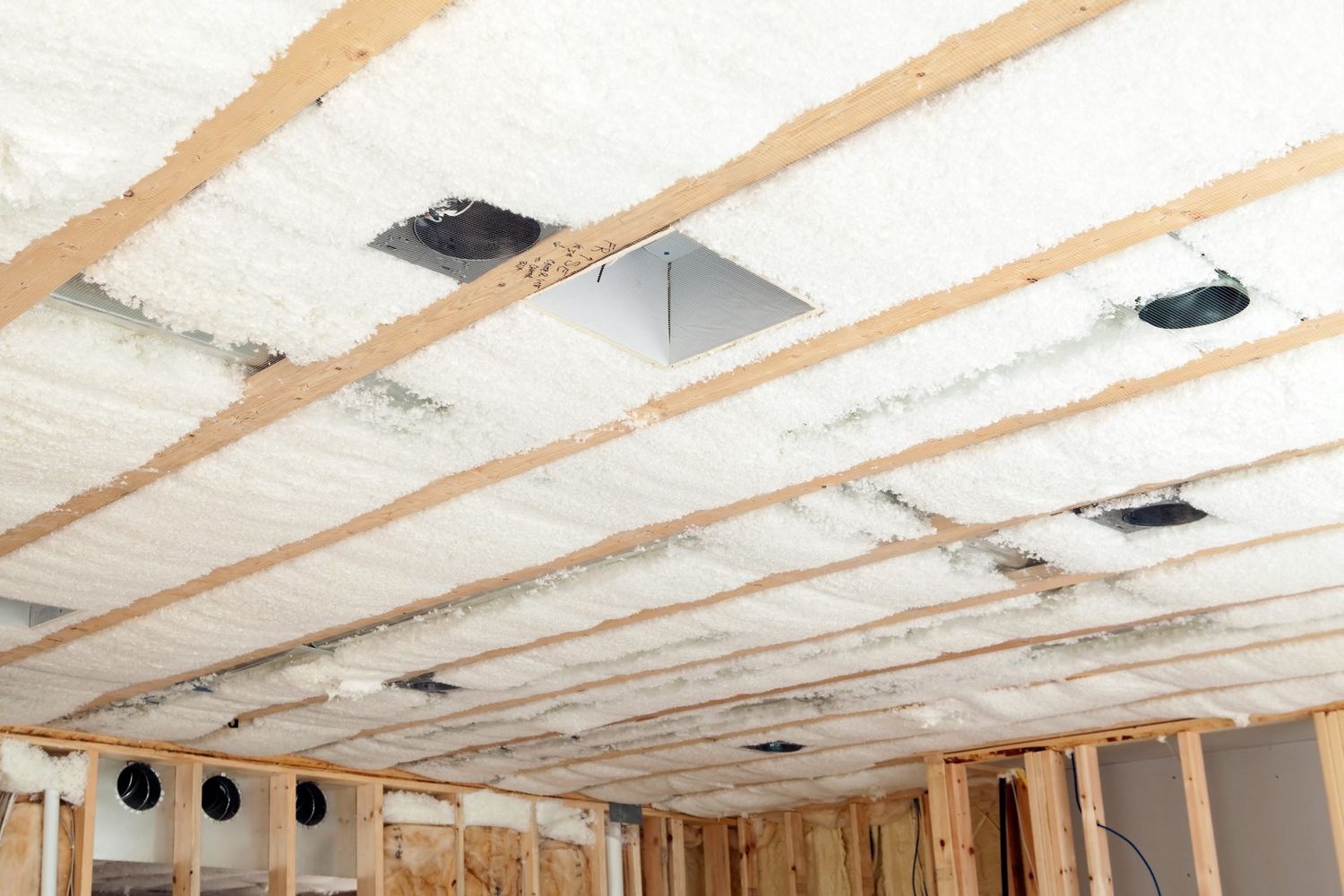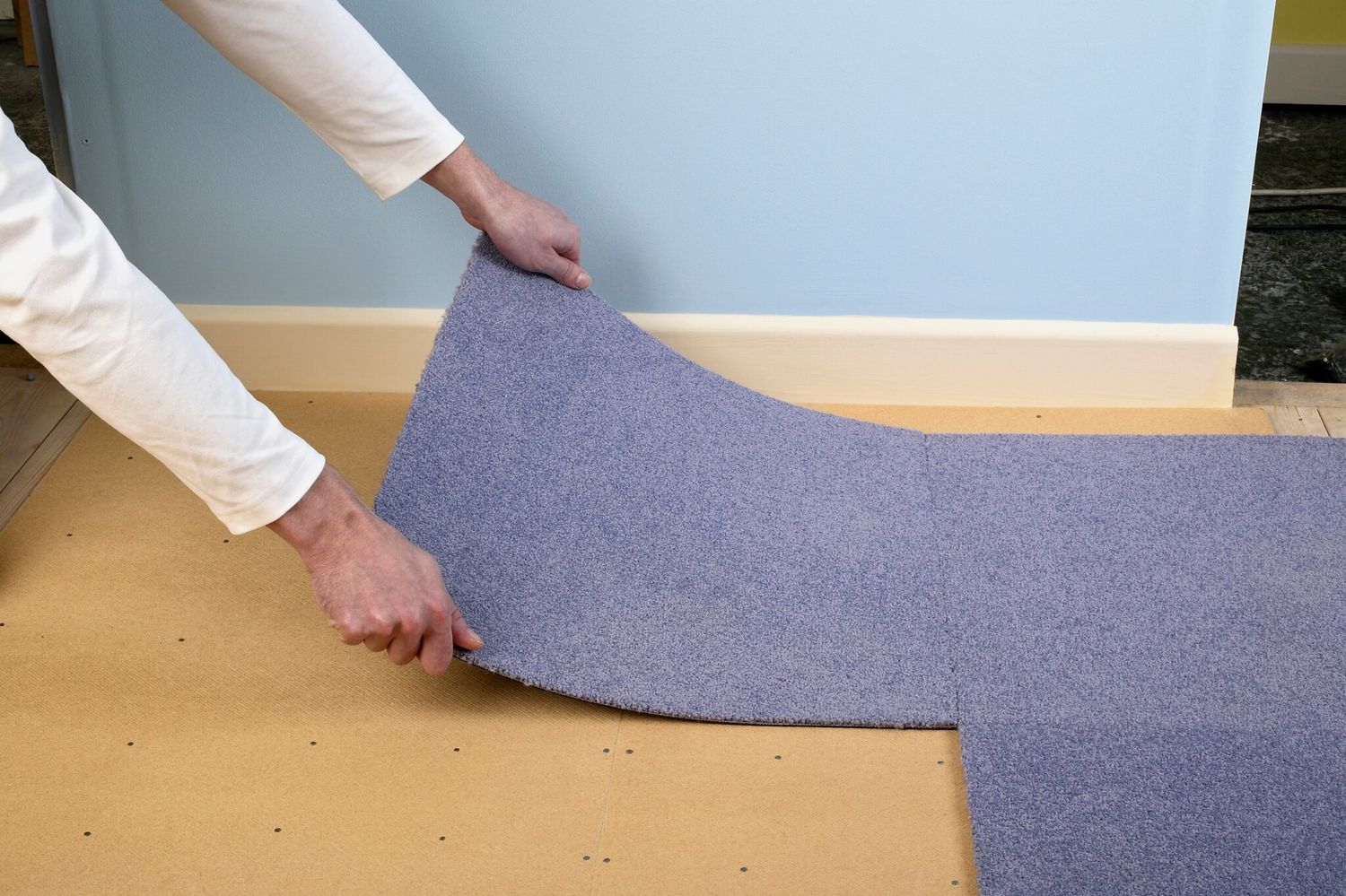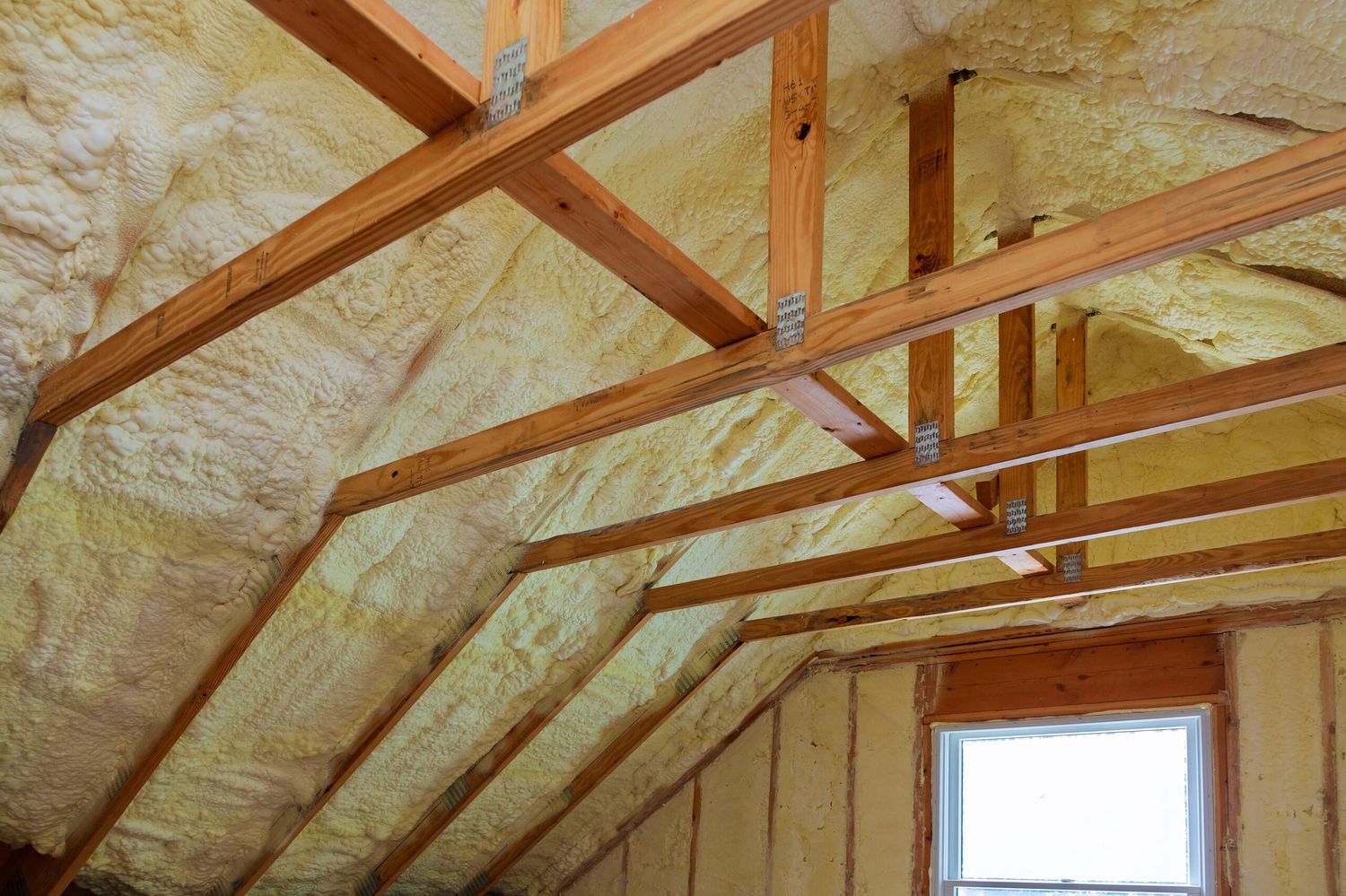Home>Production & Technology>Soundproofing>What Is The Best Weather Stripping For Soundproofing
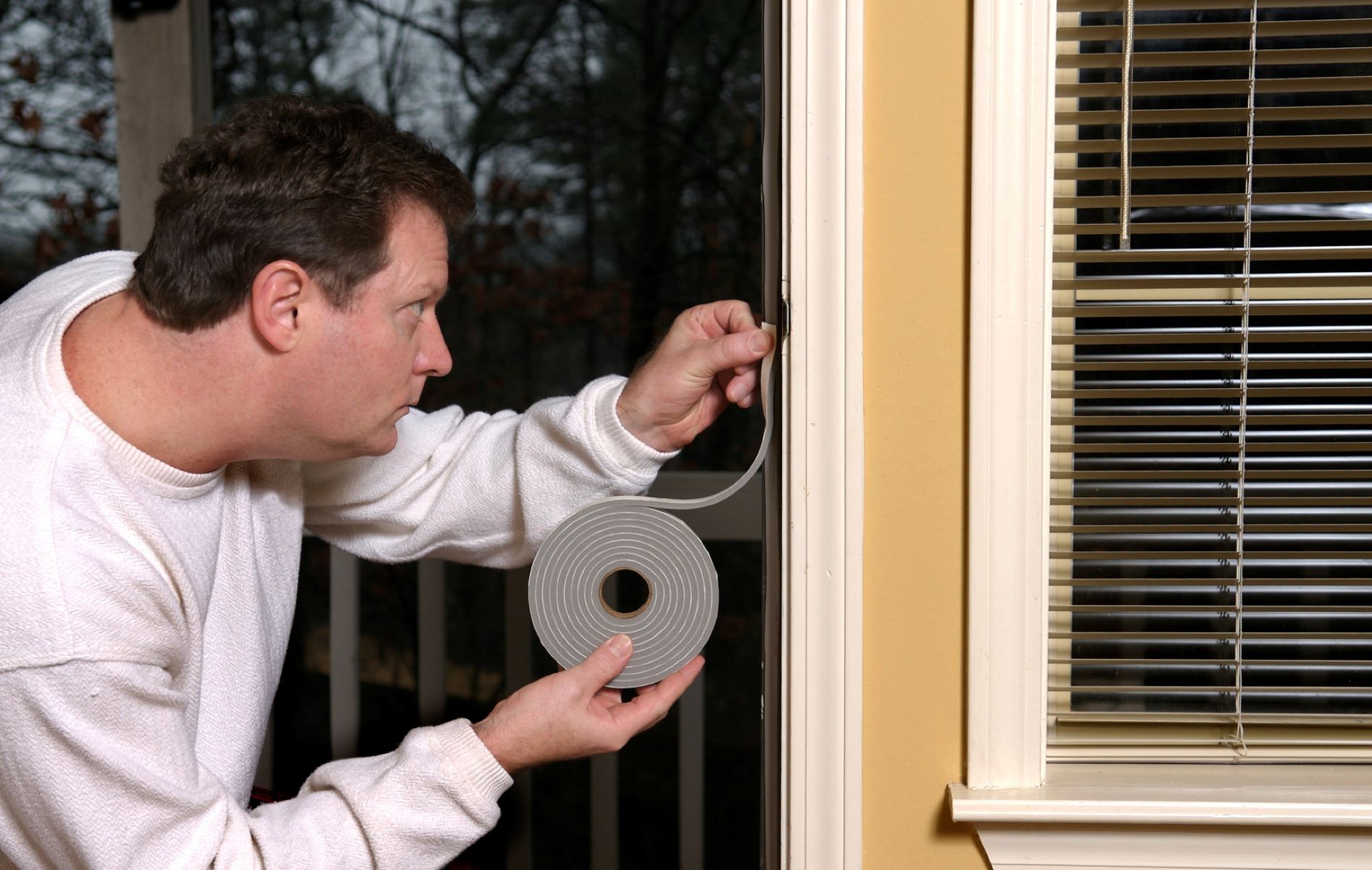

Soundproofing
What Is The Best Weather Stripping For Soundproofing
Published: January 27, 2024
Looking for the best weather stripping for soundproofing? Discover effective soundproofing solutions to minimize noise with our expert tips and recommendations.
(Many of the links in this article redirect to a specific reviewed product. Your purchase of these products through affiliate links helps to generate commission for AudioLover.com, at no extra cost. Learn more)
Table of Contents
- Introduction
- Importance of Weather Stripping for Soundproofing
- Factors to Consider for Choosing the Best Weather Stripping for Soundproofing
- Types of Weather Stripping for Soundproofing
- Door Sweep
- Window Weather Stripping
- Acoustic Caulk
- Weatherstrip Tape
- High-Density Foam Tape
- Magnetic Weatherstripping
- V-Seal Weatherstripping
- Door Bottom Seal
- How to Install Weather Stripping for Soundproofing
- Conclusion
Introduction
Soundproofing is a crucial aspect of creating a peaceful and quiet environment. Whether you live in a bustling city or have noisy neighbors, unwanted sounds can be a major source of stress and disturbance. One effective way to combat this problem is by using weather stripping for soundproofing.
Weather stripping refers to a variety of materials that are used to seal gaps and prevent air, moisture, and sound from entering or escaping a room. It acts as a barrier, preventing sound waves from traveling through doors, windows, and other openings in your home or office.
By effectively sealing these gaps, weather stripping plays a significant role in reducing noise transmission and enhancing the overall acoustics of a space. It not only blocks out external noise but also helps to contain sounds within a room, creating a more peaceful and quiet environment.
Choosing the right weather stripping for soundproofing is essential to achieve optimal results. There are several factors to consider, such as the level of soundproofing required, the type of surface you are sealing, and the ease of installation. In this article, we will explore different types of weather stripping and guide you on how to choose the best option for your soundproofing needs.
Importance of Weather Stripping for Soundproofing
Weather stripping plays a vital role in soundproofing by sealing gaps and preventing sound transmission. It is essential for maintaining a quiet and peaceful environment, especially in urban areas or homes with thin walls. Here are several reasons why weather stripping is crucial for soundproofing:
- Noise Reduction: The main purpose of weather stripping is to reduce noise transmission between spaces. When properly installed, it forms a barrier that blocks sound waves from traveling through gaps in doors, windows, and other openings.
- Improved Acoustics: Weather stripping helps to create a more controlled acoustic environment by containing sound within a room. This is particularly essential for recording studios, home theaters, or any space where sound quality and clarity are of utmost importance.
- Energy Efficiency: In addition to soundproofing benefits, weather stripping also contributes to energy efficiency. It seals drafts and prevents air leakage, resulting in reduced energy bills and a more comfortable indoor environment.
- Privacy: Properly installed weather stripping can help maintain privacy by blocking out sound from neighboring rooms or external sources. This is especially important in shared living spaces or offices where privacy is essential.
- Peace of Mind: Living in a quiet and peaceful environment can have significant impacts on our well-being and overall quality of life. By reducing unwanted noise, weather stripping helps create a serene and tranquil space where you can relax, work, or sleep without disruptions.
Overall, weather stripping is an effective and affordable solution for soundproofing. By sealing gaps and preventing sound transmission, it enhances the acoustic quality of your space, improves energy efficiency, and provides a more peaceful and quiet environment.
Factors to Consider for Choosing the Best Weather Stripping for Soundproofing
When choosing weather stripping for soundproofing, it’s important to consider several factors to ensure you select the best option for your specific needs. Here are some key factors to keep in mind:
- Level of Soundproofing: Determine the level of soundproofing you require. Are you looking to block out loud external noises or simply reduce sound transmission within a room? Understanding your specific soundproofing needs will help you choose the appropriate weather stripping material.
- Type of Surface: Consider the type of surface you need to seal. Weather stripping materials may vary in their compatibility with different surfaces such as wood, metal, or glass. Ensure that the weather stripping you choose is suitable for the specific surface you are working with.
- Installation Ease: Evaluate the ease of installation. Some weather stripping options require professional installation, while others are DIY-friendly. Consider your skills and resources when choosing weather stripping that can be easily installed with the tools and equipment you have available.
- Durability and Longevity: Look for weather stripping that is durable and long-lasting. Consider factors such as resistance to temperature changes, UV exposure, and wear and tear. Investing in high-quality weather stripping will ensure that it effectively soundproofs your space for years to come.
- Sealing Effectiveness: Assess the sealing effectiveness of the weather stripping. The material should create a tight seal when installed properly, preventing air and sound from seeping through gaps. Consider materials that are flexible and can conform to irregular surfaces to ensure maximum sealing efficiency.
- Maintenance and Cleaning: Take into account the maintenance requirements of the weather stripping. Some materials may require regular cleaning or occasional replacement. Consider the level of maintenance you are willing to undertake when selecting the best weather stripping option.
- Budget: Determine your budget for soundproofing. Weather stripping comes in various price ranges, so it’s important to find a balance between quality and affordability. Consider the long-term benefits and potential energy savings that may outweigh the initial cost.
By considering these factors, you can make an informed decision and choose the best weather stripping for your soundproofing needs. Remember to prioritize your specific soundproofing requirements, surface compatibility, ease of installation, durability, sealing effectiveness, maintenance, and your budget to ensure optimal results.
Types of Weather Stripping for Soundproofing
There are several types of weather stripping that are commonly used for soundproofing purposes. Each type offers unique characteristics and advantages, so it’s important to understand their differences to choose the most suitable option for your needs. Here are some commonly used types of weather stripping for soundproofing:
- Door Sweep: Door sweeps are typically made of heavy-duty rubber or vinyl and are attached to the bottom of doors to seal the gap between the door and the floor. They are effective in blocking out sound and preventing airflow, making them an excellent option for soundproofing doors.
- Window Weather Stripping: Window weather stripping can be made of materials such as rubber, vinyl, or foam. It is applied around the edges of windows to seal gaps and prevent sound and drafts from entering or escaping. Window weather stripping comes in various forms, including adhesive strips, caulking, or V-seals.
- Acoustic Caulk: Acoustic caulk is a specialized type of caulk designed for soundproofing purposes. It is applied around the edges of windows, doors, and baseboards to create an airtight seal and prevent sound leakage. Acoustic caulk is flexible and helps reduce both airborne and impact noise.
- Weatherstrip Tape: Weatherstrip tape is a convenient and easy-to-install option for sealing gaps. It is usually made of foam or rubber and comes in adhesive strips that can be applied to windows, doors, and other gaps. Weatherstrip tape is effective in blocking out sound and is suitable for various surfaces.
- High-Density Foam Tape: High-density foam tape is an effective option for sealing gaps and reducing sound transmission. It is typically made of durable, dense foam material and can be applied to windows, doors, and other gaps. High-density foam tape provides a tight seal and helps block out sound effectively.
- Magnetic Weatherstripping: Magnetic weatherstripping consists of flexible strips with embedded magnets that adhere to metal surfaces. It is commonly used for sealing gaps in metal doors and windows. Magnetic weatherstripping provides a strong seal, effectively reducing sound transmission.
- V-Seal Weatherstripping: V-seal weatherstripping, also known as tension seal weatherstripping, features a V-shaped design that effectively blocks out sound and drafts. It is commonly used for sealing the sides of doors and windows and is available in various materials, including rubber, vinyl, and metal.
- Door Bottom Seal: Door bottom seals are installed on the bottom of doors to seal the gap and prevent sound and drafts from entering. They are usually made of rubber or vinyl and are effective in reducing noise transmission and improving energy efficiency.
Each type of weather stripping has its own benefits and applications. Consider the specific areas you need to seal and the level of soundproofing you require when choosing the most suitable type of weather stripping for your soundproofing project.
Door Sweep
A door sweep is a popular type of weather stripping that is specifically designed to seal the gap between the bottom of a door and the floor. It is an effective solution for soundproofing doors and preventing drafts from entering a room. Here are some key features and benefits of using a door sweep:
- Noise Reduction: A door sweep helps to block out sound by sealing the gap at the bottom of the door. It prevents sound waves from traveling through the opening and helps create a quieter and more peaceful environment.
- Air and Dust Sealing: In addition to soundproofing, a door sweep also acts as a barrier against airflow, preventing drafts, dust, and insects from entering the room. This helps improve energy efficiency and maintain a cleaner indoor space.
- Easy Installation: Door sweeps are relatively easy to install, making them a popular choice for DIY projects. Most door sweeps come with adhesive backing or screws for secure attachment to the door. Simply measure the width of the door, cut the door sweep to size if needed, and attach it to the bottom of the door.
- Variety of Materials: Door sweeps are available in various materials, including rubber, vinyl, and aluminum. Rubber door sweeps are durable and effective at blocking out sound and drafts. Vinyl door sweeps are flexible and easy to install, while aluminum door sweeps offer a more durable and long-lasting solution.
- Adjustable Options: Some door sweeps are adjustable, allowing you to raise or lower them to accommodate different floor heights or provide a tighter seal. This adjustability ensures a custom fit for optimal soundproofing and sealing.
- Compatibility: Door sweeps are suitable for various types of doors, including exterior doors, interior doors, and even garage doors. They can be installed on wood, metal, or fiberglass doors, making them a versatile solution for soundproofing and weatherproofing.
Whether you want to reduce noise from traffic, neighbors, or other sources, a door sweep is an effective and affordable solution. It is a simple yet highly effective way to soundproof your doors, improve energy efficiency, and create a quieter and more comfortable living environment.
Window Weather Stripping
Window weather stripping is an essential component of soundproofing and energy efficiency for windows. It helps create a seal around the edges of windows, preventing drafts, noise, and air leakage. Here are some key features and benefits of using window weather stripping:
- Noise Reduction: Window weather stripping helps to block out external noise by sealing the gaps around the window frame. It minimizes the transmission of sound waves, creating a quieter and more peaceful indoor environment.
- Draft Prevention: One of the main purposes of window weather stripping is to prevent drafts from entering the room. It forms a barrier against air leakage, reducing heat loss in the winter and heat gain in the summer. This contributes to improved energy efficiency and lower utility bills.
- Various Material Options: Window weather stripping is available in different materials, including rubber, vinyl, foam, and silicone. Each material has its own advantages and level of effectiveness in terms of sealing gaps and reducing noise. Choose a material that suits your specific needs and preferences.
- Adhesive or Compression Fit: Window weather stripping can be applied using adhesive backings, which are easy to install and provide a secure seal. Alternatively, there are compression-fit options that can be pressed into place for a more snug fit. These options are adjustable and allow for easy removal or replacement if needed.
- Compatibility: Window weather stripping is suitable for various window types, including casement windows, sliding windows, double-hung windows, and more. It can be used on both wooden and metal frames, providing versatility in soundproofing different types of windows.
- Additional Benefits: In addition to noise reduction and energy efficiency, window weather stripping offers other advantages. It helps keep out dust, pollen, and bugs, improving indoor air quality. It also enhances the overall insulation of the window, reducing condensation and increasing comfort.
When selecting window weather stripping, consider the specific gaps and cracks around your windows that need sealing, the level of noise reduction required, and the material that best suits your needs. Properly installed window weather stripping can significantly reduce noise infiltration, improve energy efficiency, and create a more comfortable and peaceful living or working environment.
Acoustic Caulk
Acoustic caulk is a specialized type of caulk that is designed specifically for soundproofing purposes. It is a highly effective solution for sealing gaps and cracks around windows, doors, baseboards, and other areas where noise may escape or enter a room. Here are some key features and benefits of using acoustic caulk:
- Sound Blocking: Acoustic caulk creates an airtight and soundproof seal, preventing sound waves from passing through gaps and cracks. It effectively reduces airborne and impact noise, making it an excellent choice for soundproofing applications.
- Flexibility: Acoustic caulk is designed to remain flexible after drying, making it ideal for areas that may experience movement or expansion and contraction, such as around windows and doors. This flexibility ensures a secure seal that withstands environmental changes without cracking or breaking.
- Easy to Apply: Acoustic caulk is typically available in tubes and can be easily applied using a caulk gun. It adheres well to various materials, such as wood, metal, and drywall, and can be smoothly applied to fill gaps and cracks. Cleanup is easy with water and soap before the caulk dries.
- Durable and Long-lasting: Acoustic caulk is designed to withstand daily wear and tear, as well as environmental factors such as temperature changes and UV exposure. It remains durable and effective for an extended period, providing long-lasting soundproofing benefits.
- Versatile Application: Acoustic caulk can be used in a wide range of applications, including sealing gaps and cracks around windows, doors, baseboards, electrical outlets, and HVAC vents. It can also be used in conjunction with other soundproofing materials for enhanced noise reduction.
- Paintable: Acoustic caulk is typically paintable, allowing you to match it with the color of your walls or trim. This ensures a seamless and aesthetically pleasing finish that blends in with your existing decor.
When using acoustic caulk for soundproofing, it is important to ensure that the gaps and cracks are properly filled for optimal results. Apply the caulk along the edges of windows and doors, as well as any other areas where sound may leak. Allow the caulk to dry completely before testing for soundproofing effectiveness.
Acoustic caulk is an excellent choice for achieving a high level of soundproofing and reducing noise transmission through gaps and cracks. Its flexibility, durability, and ease of application make it a valuable tool in creating a quieter and more comfortable living or working environment.
Weatherstrip Tape
Weatherstrip tape is a convenient and versatile option for soundproofing purposes. It comes in various materials, such as foam, rubber, or vinyl, and is designed to seal gaps and cracks in windows, doors, and other areas. Here are some key features and benefits of using weatherstrip tape for soundproofing:
- Easy Installation: Weatherstrip tape is incredibly easy to install. It usually comes in adhesive strips that can be applied directly to the desired area. Simply measure the length needed, cut the tape to size if necessary, and press it into place.
- Noise Reduction: Weatherstrip tape effectively blocks out sound by sealing gaps and cracks. It prevents sound waves from passing through, reducing noise transmission and creating a quieter environment.
- Draft Prevention: In addition to soundproofing benefits, weatherstrip tape also helps to prevent drafts and air leakage. It creates a barrier against outside air, improving energy efficiency and reducing heating or cooling costs.
- Flexibility: Weatherstrip tape is flexible and can conform to irregular surfaces and gaps of different sizes. This ensures a tight seal and maximum effectiveness in reducing sound and preventing air leakage.
- Versatile Usage: Weatherstrip tape can be used in various applications. It is suitable for sealing gaps around windows, doors, attic hatches, and electrical outlets. It can also be used to seal gaps between movable parts, such as sliding windows or doors.
- Weather Resistance: Weatherstrip tape is designed to withstand different weather conditions. It is resistant to temperature changes, UV exposure, and moisture, ensuring durability and long-lasting performance.
- Reusable: Some weatherstrip tapes are designed to be reusable. This allows for easy removal and reinstallation, making it convenient for maintenance or if you need to replace the tape in the future.
When using weatherstrip tape, ensure that the surface is clean and dry before applying the tape for better adhesion. Make sure to measure and cut the tape accurately to ensure a proper fit and seal.
Weatherstrip tape is an affordable and effective solution for soundproofing and energy efficiency. Its easy installation, versatility, and ability to block out sound and prevent drafts make it a popular choice for DIY soundproofing projects.
High-Density Foam Tape
High-density foam tape is a popular choice for soundproofing applications due to its effectiveness in creating a tight seal and reducing noise transmission. It is commonly used to seal gaps and cracks around windows, doors, and other openings. Here are some key features and benefits of using high-density foam tape for soundproofing:
- Noise Reduction: High-density foam tape is designed to block out sound waves effectively, reducing noise transmission. It creates a barrier that prevents sound from entering or escaping through gaps and cracks.
- Sealing Efficiency: The dense and resilient nature of the foam material enables high-density foam tape to provide a tight seal. It conforms well to irregular surfaces and effectively fills gaps of different sizes, ensuring minimal sound leakage.
- Energy Efficiency: In addition to its soundproofing properties, high-density foam tape also helps improve energy efficiency by sealing drafts. It prevents air leakage, reducing heat loss in the winter and heat gain in the summer, thereby enhancing insulation and lowering energy consumption.
- Durable and Long-lasting: High-density foam tape is known for its durability and long-lasting performance. It is resistant to wear and tear, as well as to changes in temperature and humidity. This ensures that the tape remains effective in soundproofing and sealing for an extended period.
- Easy Installation: High-density foam tape is typically available in adhesive-backed strips, allowing for easy installation. Simply measure the required length, cut the tape to size, and firmly press it onto the desired area. The adhesive backing ensures a secure and stable attachment.
- Versatile Usage: High-density foam tape can be used for various applications, including sealing gaps and cracks around windows, doors, vents, and ducts. It can also be used in automotive soundproofing projects or to cushion and reduce vibration in machinery.
- Cost-effective Solution: High-density foam tape offers a cost-effective solution for soundproofing. It is a budget-friendly option that provides effective noise reduction, making it a popular choice for both residential and commercial applications.
Before applying high-density foam tape, ensure that the surfaces are clean, dry, and free of any debris or grease to maximize adhesion. Measure and cut the tape accurately to fit the gaps or cracks for a proper seal.
Overall, high-density foam tape is a versatile and efficient solution for soundproofing and improving energy efficiency. Its ability to create a tight seal and block out noise makes it an excellent choice for reducing sound transmission and creating a more peaceful environment.
Magnetic Weatherstripping
Magnetic weatherstripping is a unique and effective option for sealing gaps and reducing sound transmission in doors and windows. It utilizes magnets to create a secure and airtight seal, providing excellent soundproofing benefits. Here are some key features and benefits of using magnetic weatherstripping:
- Noise Reduction: Magnetic weatherstripping forms a tight seal, preventing sound waves from passing through gaps. It effectively reduces noise transmission, creating a quieter and more peaceful indoor environment.
- Secure and Easy Installation: Magnetic weatherstripping is typically designed to be easily installed and removed. It consists of two parts – a magnetic strip and a metal strip. The magnetic strip is attached to one side of the gap, while the metal strip is attached to the other side. When the door or window is closed, the magnets attract and create a secure seal.
- Flexible and Adjustable: Magnetic weatherstripping is flexible and adjustable, allowing for a custom fit. You can trim the strips to the desired length and adjust the placement for a tight seal. Additionally, the magnetic strength can be chosen to suit the specific soundproofing needs.
- Durable and Long-lasting: Magnetic weatherstripping is known for its durability and longevity. The magnetic components are designed to withstand repeated use and still maintain their effectiveness over time. This ensures that the weatherstripping remains in place and provides continued soundproofing benefits.
- Versatile Usage: Magnetic weatherstripping is suitable for a variety of applications, including sealing gaps in exterior and interior doors, windows, and even refrigerator doors. It can be used in residential and commercial settings to effectively reduce sound transmission.
- Airtight and Energy Efficient: Besides soundproofing, magnetic weatherstripping also helps to prevent drafts and air leakage. The tight seal created by the magnets keeps outside air and moisture from entering, improving energy efficiency and reducing heating and cooling costs.
When installing magnetic weatherstripping, ensure that the surfaces are clean and dry for optimal adhesion. Align the magnetic and metal strips accurately to create a strong bond when the door or window is closed.
Magnetic weatherstripping is an excellent choice for soundproofing doors and windows. Its secure seal, easy installation, durability, and versatility make it an effective solution for reducing noise transmission and maintaining a quiet and comfortable living or working space.
V-Seal Weatherstripping
V-Seal weatherstripping, also known as tension seal weatherstripping, is a popular choice for sealing gaps around doors and windows. It features a V-shaped design that effectively blocks out sound, drafts, and weather elements. Here are some key features and benefits of using V-Seal weatherstripping:
- Soundproofing: V-Seal weatherstripping is designed to create a tight seal that effectively reduces noise transmission. The V-shaped design compresses when the door or window is closed, preventing soundwaves from passing through the gaps.
- Easy Installation: V-Seal weatherstripping is straightforward to install, making it a popular choice for DIY projects. It typically comes with an adhesive backing that allows for easy attachment to the edges of doors and windows. Simply measure the required length, cut the strip, and press it into place.
- Air and Weather Protection: In addition to soundproofing, V-Seal weatherstripping offers excellent protection against drafts, air leakage, and outdoor elements. The V-shaped seal creates a barrier that prevents cold air, moisture, and dust from entering the room, enhancing both energy efficiency and comfort.
- Flexible and Adjustable: V-Seal weatherstripping is flexible and can conform to irregular surfaces and gaps of different sizes. This ensures a secure and customizable fit, providing maximum sealing effectiveness and soundproofing benefits.
- Durable and Long-lasting: V-Seal weatherstripping is designed to withstand regular use and varying weather conditions. It is made from durable materials that can withstand temperature changes and resist wear and tear, ensuring long-lasting performance and soundproofing benefits.
- Versatile Usage: V-Seal weatherstripping is suitable for a range of applications, including sealing gaps around doors, windows, attic hatches, and even electrical outlets. It can be used in both residential and commercial settings to enhance soundproofing and energy efficiency.
- Aesthetic Appeal: V-Seal weatherstripping is available in different colors and finishes, allowing you to choose an option that complements your door or window frames. This ensures a visually appealing and seamless integration with your existing decor.
When installing V-Seal weatherstripping, make sure the surfaces are clean and dry before applying the strip for better adhesion. Measure and cut the strip accurately to fit the gaps and ensure a proper and effective seal.
V-Seal weatherstripping is an effective solution for reducing noise transmission, air leakage, and weather infiltration. Its ease of installation, durability, and versatile application make it a popular choice for creating a more comfortable and soundproofed living environment.
Door Bottom Seal
A door bottom seal is a type of weatherstripping specifically designed to seal the gap at the bottom of doors. It effectively blocks out sound, drafts, insects, and debris, providing excellent soundproofing and energy-saving benefits. Here are some key features and benefits of using a door bottom seal:
- Noise Reduction: A door bottom seal is highly effective in reducing noise transmission through the gap at the bottom of a door. It forms a barrier that blocks sound waves from entering or escaping, creating a quieter and more peaceful environment.
- Draft Prevention: One of the primary purposes of a door bottom seal is to prevent drafts and airflow. It seals the gap and minimizes heat loss in the winter and heat gain in the summer, improving energy efficiency and reducing heating and cooling costs.
- Easy Installation: Door bottom seals are typically straightforward to install. Some options come with adhesive backing, allowing for easy attachment to the bottom of the door. Others may require screws or nails for secure installation. Simply measure the width of the door, cut the seal to the appropriate length if needed, and apply or attach it to the door.
- Various Material Options: Door bottom seals are available in different materials, including rubber, vinyl, and silicone. Rubber seals are durable and provide excellent soundproofing and sealing. Vinyl and silicone seals offer flexibility and resistance to various weather conditions.
- Adjustable: Many door bottom seals are adjustable, allowing them to fit doors of different widths and heights. This adjustability ensures a customized and snug fit, maximizing the soundproofing and sealing effectiveness.
- Durable and Long-lasting: Door bottom seals are designed to withstand regular use and contact with the floor. They are made from durable materials that can endure constant opening and closing of the door. With proper maintenance, they can provide long-lasting soundproofing benefits.
- Aesthetically Pleasing: Door bottom seals come in various styles and finishes, allowing you to choose an option that matches the aesthetics of your door. This ensures a cohesive and visually appealing appearance.
When installing a door bottom seal, ensure that the door surface is clean and dry for better adhesion or attachment. Measure and cut the seal accurately to fit the width of the door, ensuring that it covers the entire gap at the bottom.
A door bottom seal is an effective solution for enhancing soundproofing and energy efficiency. By sealing the gap at the bottom of the door, it helps create a quieter, more comfortable, and energy-efficient environment.
How to Install Weather Stripping for Soundproofing
Installing weather stripping is a relatively simple process that can greatly improve soundproofing in your home or office. Follow these steps to effectively install weather stripping for soundproofing:
- Clean and Prepare: Begin by cleaning the surfaces where the weather stripping will be installed. Remove any dirt, dust, or debris, and ensure that the surfaces are dry. This will help the weather stripping adhere properly.
- Measure and Cut: Measure the length of the area that needs to be sealed, whether it’s a door frame, window frame, or any other opening. Use a measuring tape to get accurate dimensions. Cut the weather stripping material to the measured length, ensuring a precise fit.
- Apply Adhesive: If the weather stripping has adhesive backing, peel off the protective film to expose the adhesive side. For materials that require adhesive application, use an appropriate adhesive recommended by the manufacturer.
- Attach the Weather Stripping: Carefully align the weather stripping with the area that needs to be sealed. Press the adhesive side firmly against the surface, applying even pressure along the entire length. Make sure the weather stripping is securely attached and forms a tight seal.
- Check for Gaps: After installing the weather stripping, check for any gaps or areas that may require additional attention. Ensure there are no openings where sound or drafts could enter or escape. If necessary, make adjustments or apply additional weather stripping to fill any gaps.
- Test for Effectiveness: Once the weather stripping is installed, test its effectiveness by closing the door or window. Listen for any reduction in sound transmission and check for any drafts. Make adjustments as needed to achieve the desired level of soundproofing.
- Maintain and Replace: Regularly inspect and maintain the weather stripping to ensure its effectiveness. Clean the weather stripping as needed and replace any worn or damaged pieces to preserve soundproofing qualities.
When installing weather stripping, it’s essential to choose the appropriate type for the specific area you’re sealing. Consider factors like the level of soundproofing required, the type of surface you’re working with, and the durability of the material. Follow the manufacturer’s instructions for installation and maintenance to ensure optimal performance.
By properly installing weather stripping, you can significantly reduce noise transmission, enhance energy efficiency, and create a more peaceful and comfortable living or working environment.
Conclusion
Soundproofing your home or office is essential for creating a peaceful and comfortable environment. Weather stripping plays a crucial role in reducing noise transmission by sealing gaps and cracks around doors, windows, and other openings. By choosing the right weather stripping and installing it correctly, you can effectively soundproof your space and enjoy the benefits of a quieter and more serene atmosphere.
When selecting weather stripping for soundproofing, consider factors such as the level of sound reduction required, the type of surface you’re sealing, and the ease of installation. There are various types of weather stripping available, including door sweeps, window weather stripping, acoustic caulk, weatherstrip tape, high-density foam tape, magnetic weatherstripping, V-seal weatherstripping, and door bottom seals. Each type offers unique features and benefits, so choose one that suits your specific needs.
By installing weather stripping, you not only reduce noise transmission but also improve energy efficiency, enhance privacy, and create a more comfortable living or working space. Proper installation is crucial to achieve optimal soundproofing benefits. Clean the surfaces, measure and cut the weather stripping accurately, and ensure a tight and secure seal. Regularly maintain and replace the weather stripping as needed to maintain its effectiveness.
In conclusion, weather stripping is an effective and affordable solution for soundproofing. By sealing gaps and cracks, it helps minimize noise transmission, block drafts, and improve energy efficiency. Choose the appropriate weather stripping for your specific requirements, install it correctly, and enjoy the benefits of a quieter and more peaceful environment.


